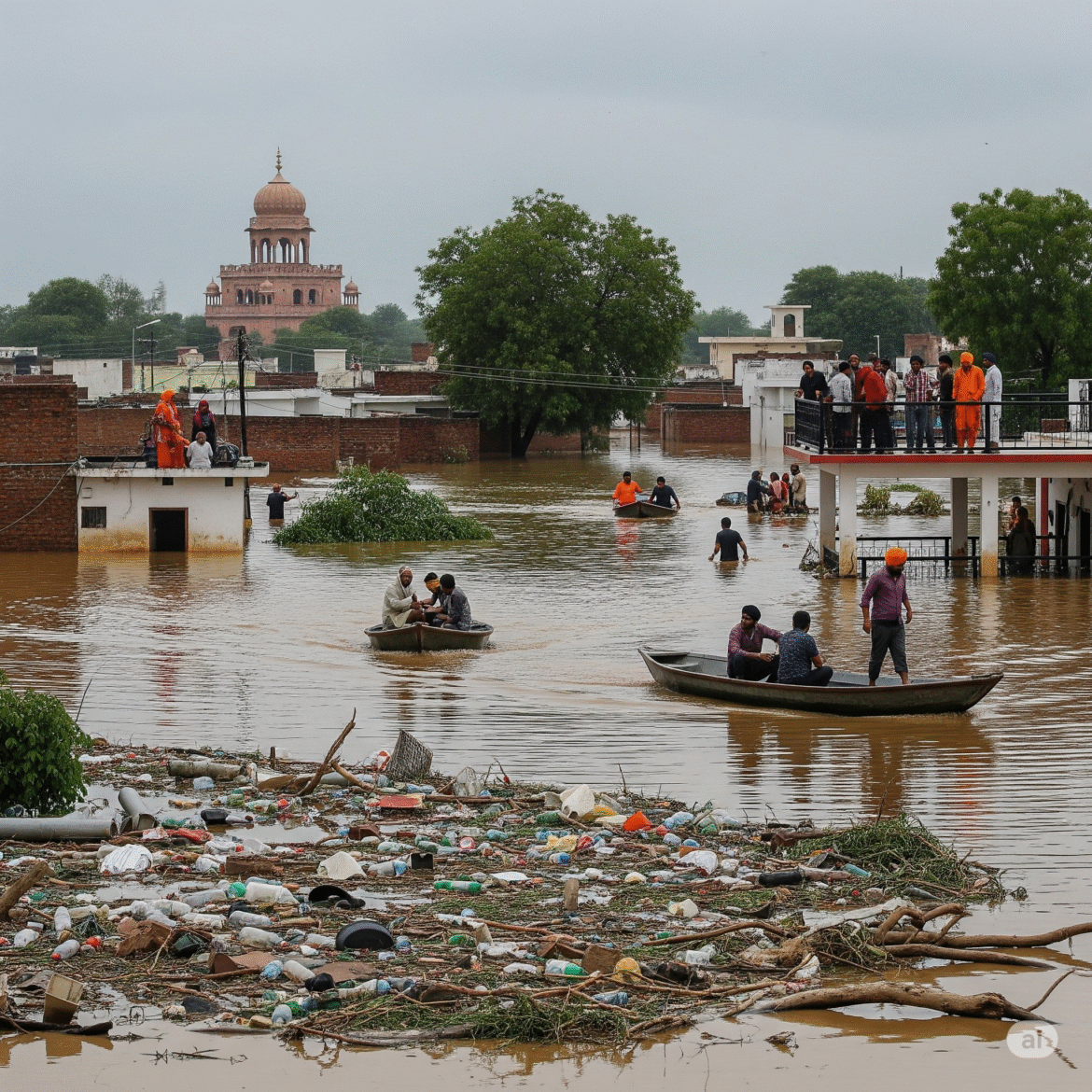AI Generated Summary
- In this moment, the Sikh diaspora and NRIs have shown the world that the ties to Punjab are as enduring and unyielding as the rivers that define it — and that when those rivers flood, the response can be just as powerful.
- For the Sikh diaspora and Non-Resident Indians (NRIs), Punjab is not just a place on a map — it is an ancestral heartbeat.
- In times of crisis, the measure of a community is not just in what it can give, but how quickly it can unite.
Rivers that have nurtured life for centuries now carry a different kind of power — one of destruction. The recent floods, the worst since 1988, have submerged homes, destroyed crops, and displaced thousands. The Sutlej, Beas, and Ravi rivers, swollen by relentless rainfall in the catchment areas of Himachal Pradesh and Jammu & Kashmir, have spilled far beyond their banks. The districts of Pathankot, Gurdaspur, Fazilka, Kapurthala, Tarn Taran, Ferozepur, Hoshiarpur, and Amritsar are among the worst hit, with low-lying villages in Patiala bracing for the waters to rise.
Yet, amid this devastation, another tide has risen — a tide of solidarity that stretches far beyond Punjab’s borders.
The Global Pulse of Punjab
For the Sikh diaspora and Non-Resident Indians (NRIs), Punjab is not just a place on a map — it is an ancestral heartbeat. Many grew up listening to stories of the land, its resilience, and its struggles. In moments of crisis, those emotional bonds translate into swift, tangible action. Social media has become a lifeline, connecting flood-hit families with donors in Canada, the UK, Australia, the US, and beyond. WhatsApp groups and Instagram reels are not just sharing images of submerged gurdwaras and drowned fields — they’re circulating fundraising links, volunteer sign-ups, and calls for urgent supplies.
The generosity is staggering. Diaspora-led nonprofits and gurdwaras abroad have activated emergency funds. Young Sikhs from Vancouver to Birmingham are organizing langar-style community kitchens in relief camps, echoing the centuries-old tradition of selfless service, or seva. Farmers’ unions, already tested during the protests of recent years, are mobilizing with boats, tractors, and manpower, their reach amplified by international donations.
Seva Without Borders
The Sikh principle of Sarbat da Bhala — welfare for all — transcends geography. In California’s Central Valley, truckers are pledging a portion of their earnings to flood relief. In Melbourne, schoolchildren are packing care kits. Diaspora engineers are coordinating with on-ground teams to set up portable water purification units. The relief effort is not a top-down initiative; it is a decentralized, people-powered movement where every contribution counts.
Even more remarkable is the speed at which help is moving. The NRIs, unbound by bureaucratic delays, can mobilize funds and resources in days, sometimes hours. They have the networks, the trust, and the agility to channel aid directly where it’s needed most. This bypasses the bottlenecks that have historically hampered large-scale disaster response in India.
More Than Aid – A Reaffirmation of Identity
For many in the diaspora, these relief efforts are more than a humanitarian gesture; they are a reaffirmation of identity. In coming together for Punjab, they are reconnecting with the soil, the language, and the shared history that shaped their families. They are showing that being far away does not mean being disconnected.
In times of crisis, the measure of a community is not just in what it can give, but how quickly it can unite. In this moment, the Sikh diaspora and NRIs have shown the world that the ties to Punjab are as enduring and unyielding as the rivers that define it — and that when those rivers flood, the response can be just as powerful.




